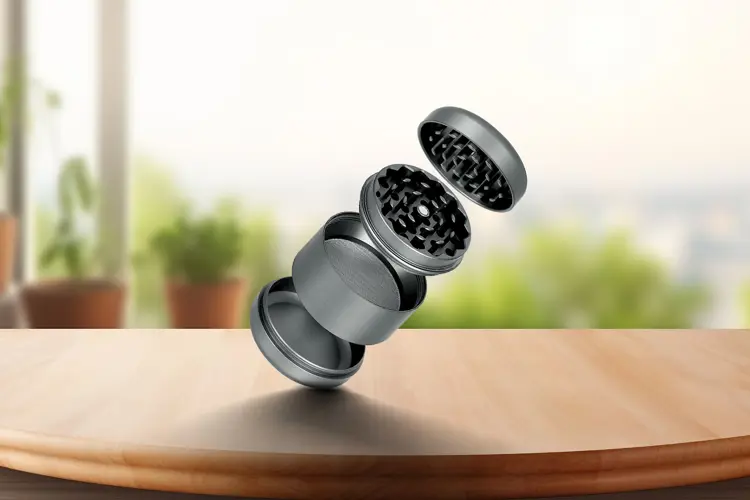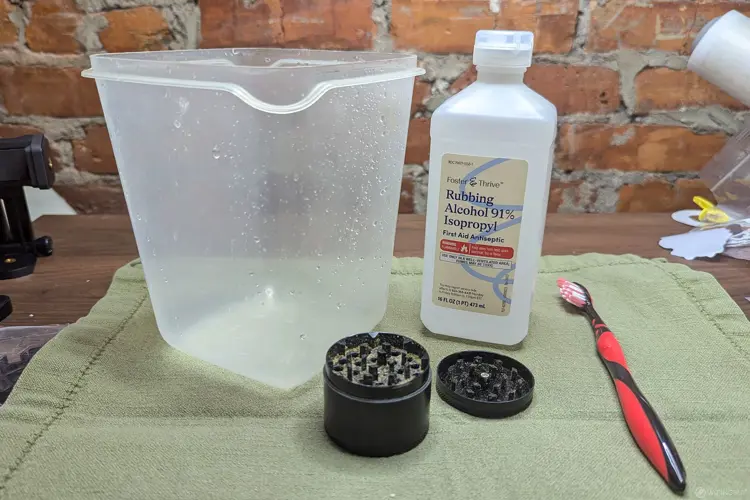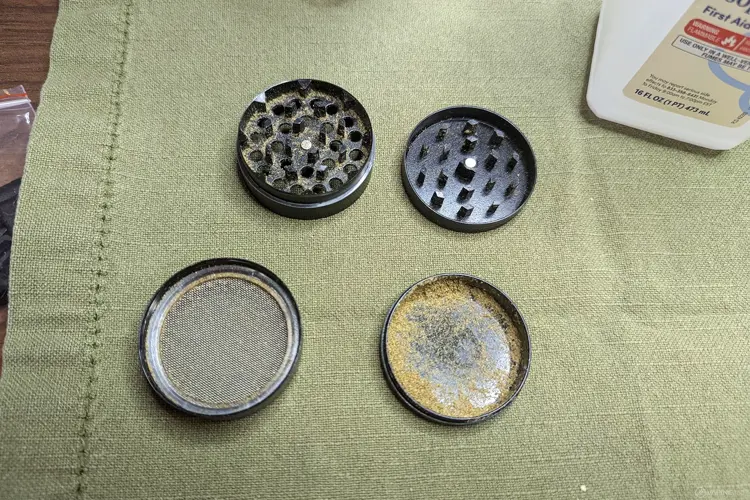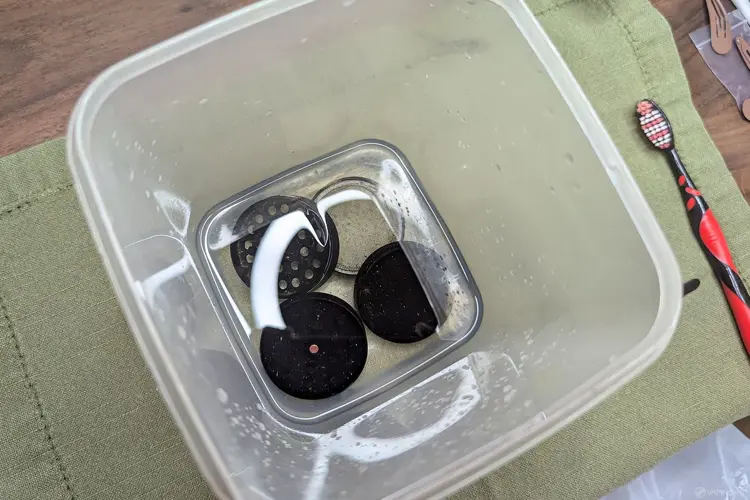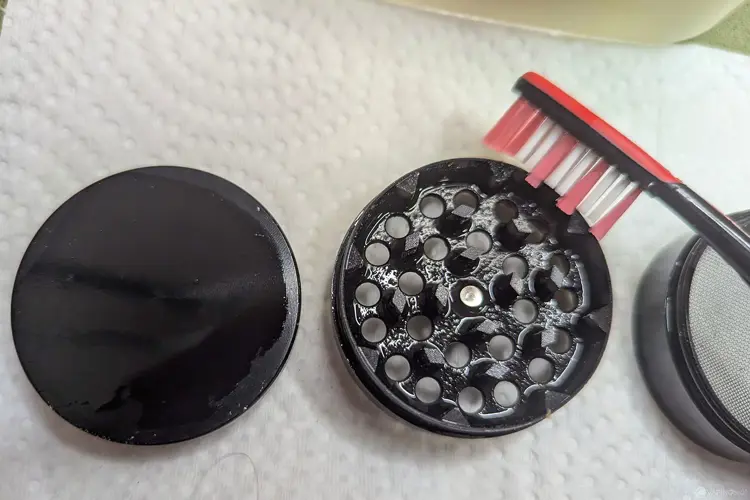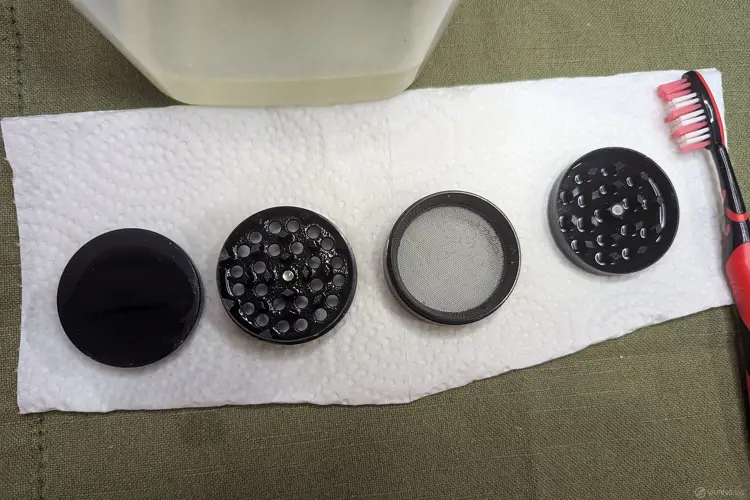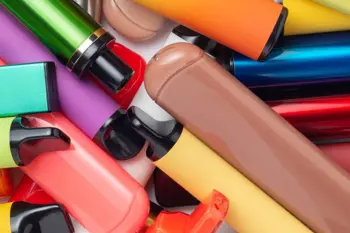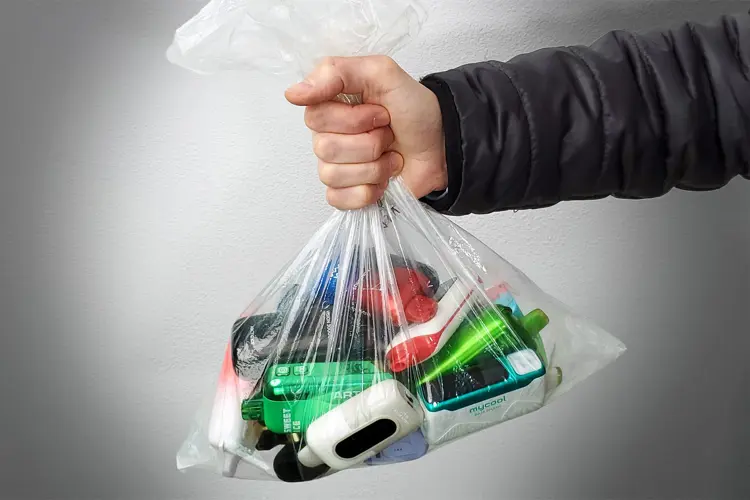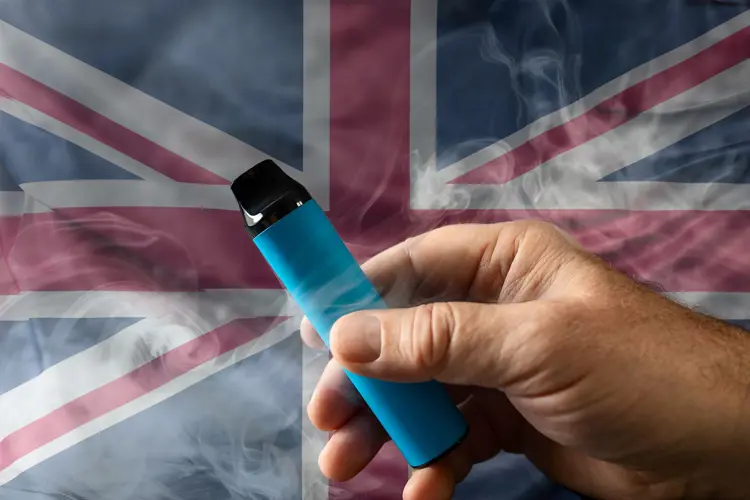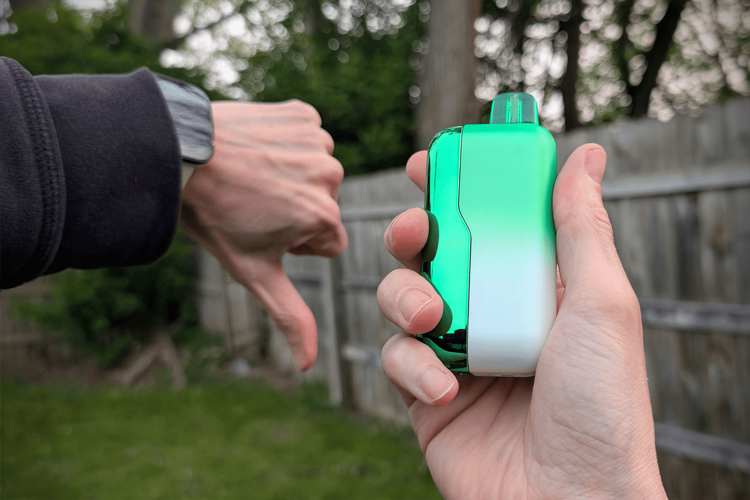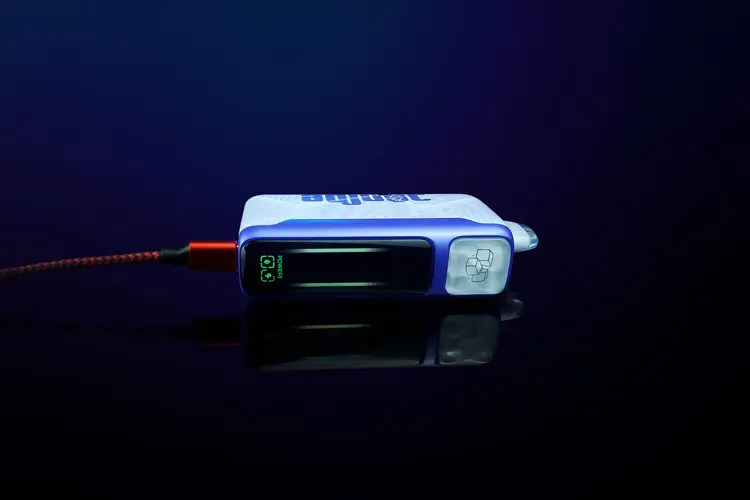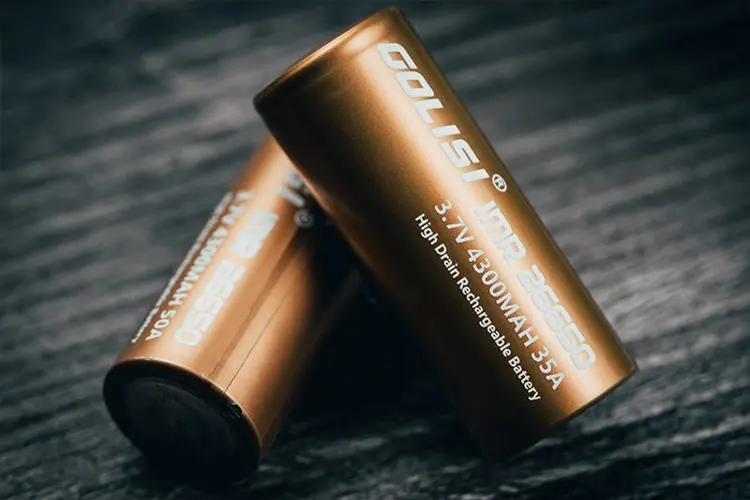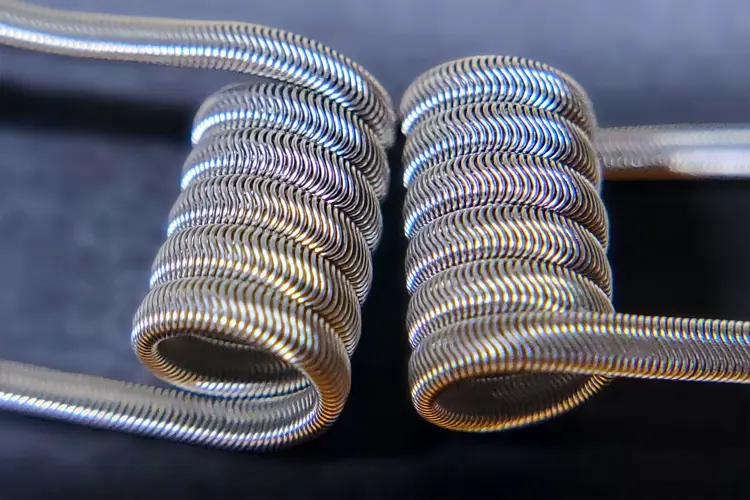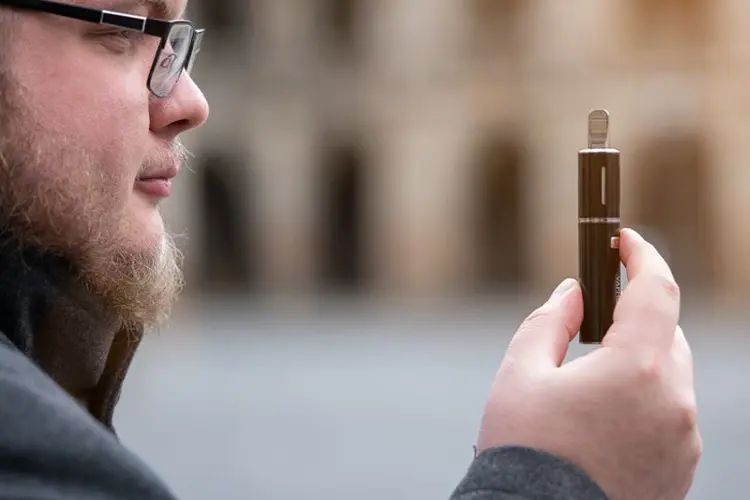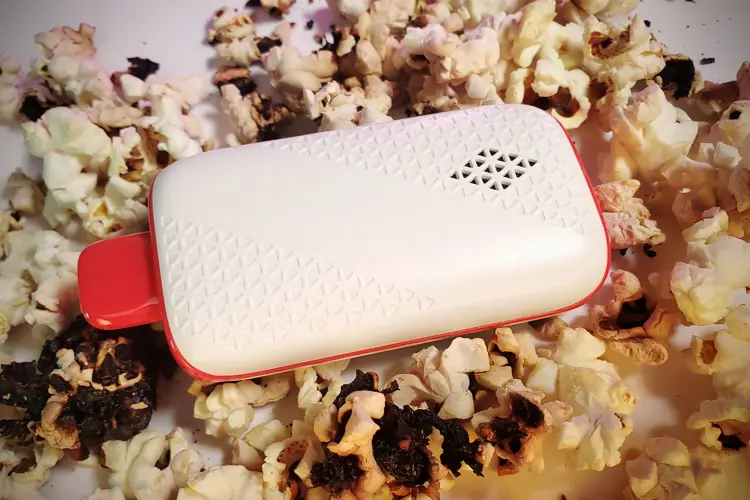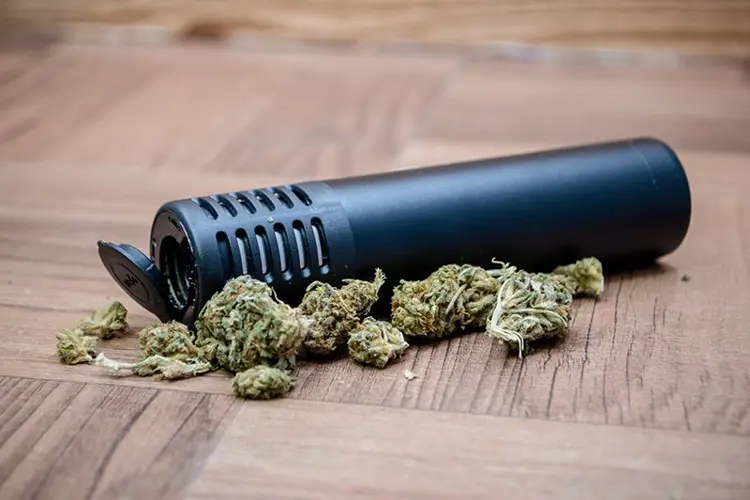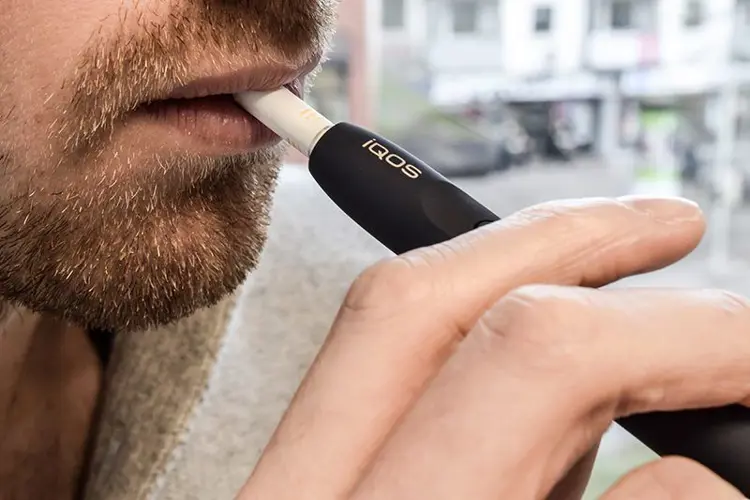My vape sessions rarely start without an herb grinder. For one, I usually opt for the leafier side of cannabis products over carts and edibles. Pre-ground bud often isn’t especially fresh, so I’m less likely to go that route.
Outside of emergencies, I wouldn't recommend prepping flower with scissors or a knife. This can sacrifice flavor and damage the bud. It’s hard to achieve a uniform grind without the right tools—unless you really know what you’re doing. I’d rather not take that risk. Plus, it’s just tedious and messy.
I keep my grinder clean to ensure that it performs at peak level. Residue builds up quickly with regular use, and the more residue there is, the harder it is for a grinder’s teeth to do their job.
What is a cannabis grinder?
It’s in the name: weed grinders grind up dried-and-cured cannabis flower. Anyone who enjoys hemp or marijuana bud should keep one on hand. You may want to clean yours more often if you switch between both types of cannabis. High-CBD flower and THC-rich marijuana have very different effects, so it may be best not to mix them.
Smokers aren’t the only ones who benefit from a high-quality metal, wood, or acrylic grinder. As I mentioned, I personally prefer weed vaporizers and dry herb pens over smoking. And even recipes for homemade edibles (including cannabutter) may require ground and decarbed flower.
Breaking weed apart by hand or using makeshift tools like scissors can work, but a clean, even grind is unlikely that way. Flavor and potency can suffer with poorly ground flower.
Types of cannabis grinders
Classic grinders have two pieces: a top and bottom half, both with pegs or teeth. Nothing fancy, but as far as I’m concerned, enough to get the job done. I just break the nugs into smaller chunks, place them between the teeth, and twist for a minute before loading my vaporizer.
More advanced grinders have three or more layers. Kief catchers are a popular addition, since they allow us to collect excess kief—the trichomes or oil glands that some people call crystals—that fall from the weed during grinding. Kief is a potent byproduct that can be collected and sprinkled from the unscrewed kief catcher onto ground weed before vaping.
Grinders come in a range of materials. Metal (stainless steel, aluminum, or zinc) is a common choice and my personal favorite, though plastic and even wooden herb grinders have their fans. Plastic or acrylic grinders tend to be the most affordable, while metal is likely to last longer and survive falls and other mishaps better.
Why should I clean my weed grinder?
No one wins with a dirty grinder. When mine goes too long without a cleaning, residue and plant leftovers build up—which can have major consequences.
For one, with residue coating and obstructing the grinder’s teeth, uniform grinds aren’t happening. The grinder can get difficult to twist, and the residue causes the weed to clump together.
Clumping is one of my main concerns with a dirty cannabis grinder. Weed doesn’t heat up evenly when it clumps, leading to poor flavor, aroma, and potency. Not the kind of start to a session I’m looking for.
A really dirty grinder can even develop mold. Weed is an organic material and can attract bacteria and fungus, especially if it’s left in warm, cramped quarters for extended periods. I’d rather clean my grinder regularly than rescue one I’ve neglected for months.
How often should I clean my grinder?
While it’s typical to put off grinder cleanings (I won’t judge), the cleaning habit is a good one to develop.
The key here is how much use the grinder gets. Depending on how often we vape—including the number of bowls packed per session—grinder cleanings can be very frequent or once every couple of months. The more bud the grinder deals with, the more often it needs freshening up.
We regular vapers should give our grinders at least a monthly wash. Before leaving one in storage for months on end, clean it first. Letting residue sit for that long can invite pathogens, especially if the grinder is kept in warm or humid conditions.
What tools do I need to clean my grinder?
It just takes a few household tools to get the job done. At a minimum, I’d suggest keeping these items on hand:
- Isopropyl alcohol (at least 70%, ideally 90%+)
- Dish soap (for plastic grinders)
- A firm toothbrush or cleaning brush
- A large container (Tupperware, plastic bag, or jar)
- A plate or bowl
- Clean water
- A towel
Also, if there’s any kief to salvage from the grinder before cleaning, I’ll bring out an airtight glass or silicone container to store it for later. To remove layer upon layer of gunk and oils, the following may be helpful:
- A freezer
- A toothpick or soft-bristled brush
There are vapers who advocate for boiling grinders, so in that case, use a stovetop, pots or pans, and a pair of tongs. Some grinders are at risk of damage this way. (See more on boiling below.)
How to clean a metal grinder: easy mode
I’ll start us off with the basic method. It’s extremely simple, but I’m still careful to take my time and be as thorough as possible. A good scrub can clear away most or all leftover residues.
Let’s focus on metal grinders for now. Plastic and wooden grinders have some unique considerations, so I added separate instructions for them below.
Disassemble and empty the grinder
Grinders have two or more pieces. To ensure I’m covering the most surface area, I disassemble mine fully (including any removable screens) at the start of each cleaning session.
I also empty out leftover kief into a bowl or onto a plate, then move it to an airtight container as soon as possible.
If you couldn’t tell, I’m a big proponent of collecting and saving kief for later, since it can be used to top a bowl, or sprinkled into ground bud for heating in a portable or desktop vaporizer. Or, if you have some extra time on your hands, you can even use it to coat homemade moon rocks.
Like unground bud, I avoid storing kief in sunlit, humid conditions, or letting it sit around for a year or more. Just because it’s highly concentrated doesn’t mean it can’t lose potency.
Soak the grinder in isopropyl alcohol
Metal grinders can be soaked in isopropyl alcohol. I’d go for at least 70%, though I prefer higher-strength isopropyl. More concentrated solutions do an even better job at battling residue and bacteria. I’ve been using 91% isopropyl lately.
I start by filling a large jar or plastic bag with enough alcohol to submerge all components. Then, I drop in each section of my grinder and keep them there for at least 30 minutes; if the grime is extra stubborn, I’ll extend that to an hour. Shaking the container periodically helps break down residue.
Scrub the grinder with a brush
Now that the soak is complete, I empty the alcohol and remove each part of my grinder. I wouldn’t worry if the grinder doesn’t look clean yet—that’s normal. It’s also why we have a scrubbing brush on standby.
While the remaining grime is still damp, I begin scrubbing it away with a stiff brush. If I’ve soaked my grinder long enough, the residue comes off easily. If not, I’ll soak the offending piece for a bit longer before trying again.
Rinse and dry the grinder
After scrubbing, I give my grinder a warm water rinse to clear away the remaining plant material and alcohol. All that’s left to do is lay each part on a towel to dry.
I'll also offer some advice: be patient and hold off grinding until the components are fully dry. Damp flower won’t grind easily and will make a gunky mess of any grinder, meaning the freshly scrubbed surfaces will be dirtied in an instant. Give it at least a couple hours, and turn the grinder pieces over halfway through.
How to deep clean a grinder
Staying on top of cleaning makes our lives easier. If you put it off too long, residue hardens and accumulates past the point of a quick scrub being enough. That’s your cue to try an alternative cleaning method.
I’d start by removing any ground weed and kief, then disassembling the grinder. Next, I’ll try either:
- Freezing my grinder: Keeping all pieces lying upright, I’ll stash my grinder in the freezer for 30 minutes, or however long it takes for gunk to loosen its grip. Ideally, the residue will break into small, brittle clumps that I can remove with a toothpick or soft-bristled brush. Then, I soak the components in alcohol before rinsing and drying.
- Soaking my grinder overnight: More often than not, I’ll deep clean my grinder by soaking it in isopropyl for more than just 30 to 60 minutes. I might also add coarse kosher salt or sea salt to the alcohol, which acts as a second solvent. After that, I’ll complete all other steps as normal.
Really, nothing beats isopropyl alcohol for cleaning metal herb grinders. That much I’m confident in saying.
How to clean a plastic grinder
Don’t clean plastic or acrylic grinders with alcohol. I’d use dish soap to avoid damaging the plastic.
Here’s what I’d recommend: disassemble and empty out plastic grinders the same as a metal one. Fill a large container with warm water and three tablespoons of soap, then fully submerge all pieces for six to seven hours. Scrub with a brush and scrape away excess residue, as needed. Simple enough.
Sadly, plastic grinders are easily damaged by chemicals and heat. Metal is superior for longevity. While dirt-cheap plastic and acrylic herb grinders aren’t hard to find, very affordable metal grinders are also available if you shop around.
How to clean a wooden grinder
Wooden grinders aren’t a common choice, but they do exist. To prevent damage, I’d clean them very carefully and suggest staying away from sharp or stiff-bristled tools, as they can scrape up the wood. Not only do scratches look bad, but they can capture residue and bacteria.
Wood is a porous material. Don’t wash wooden grinders with water, and avoid harsh chemicals like isopropyl alcohol, as both can be absorbed and cause damage. At most, I’d recommend using a damp cloth to give the grinder a gentle wipe down.
Wood grinder users are limited to brushing away build-up, for the most part. Periodically applying food-grade oil to the grinder’s surface may protect the wood and simplify cleaning.
Can I boil a grinder to clean it?
It depends on who you ask. Full disclosure, I’ve never tried boiling a grinder, and I’m a little leery of the idea. You will, however, find people who vouch for this method—even with cheap plastic grinders, which can end up warped or damaged.
Boiling metal grinders is possible. Fill a pot or pan with water, bring it to a boil, then turn down the heat. Remove any plastic or silicone parts from the grinder, and place the metal parts in the hot water for a few minutes. Remove them with tongs and let them cool off before scrubbing away any caked-on residue. You can clean the other parts (if any) with soap and warm (not boiling) water.
I probably don’t need to say it but never boil wooden grinders. They may shrink, warp, or swell, and chances are, they won’t be salvageable.
President Trump promised during his election campaign to “save vaping," but his administration has undermined that goal at every turn.
The U.S. disposable vape market has grown to $2 billion in annual sales, although nearly none of the products are authorized by the FDA.
More than 30 bills that would impose severe restrictions vaping consumers’ product choices remain active in U.S. state legislatures.
The Freemax REXA PRO and REXA SMART are highly advanced pod vapes, offering seemingly endless features, beautiful touchscreens, and new DUOMAX pods.
The OXVA XLIM Pro 2 DNA is powered by a custom-made Evolv DNA chipset, offering a Replay function and dry hit protection. Read our review to find out more.
The SKE Bar is a 2 mL replaceable pod vape with a 500 mAh battery, a 1.2-ohm mesh coil, and 35 flavors to choose from in 2% nicotine.

